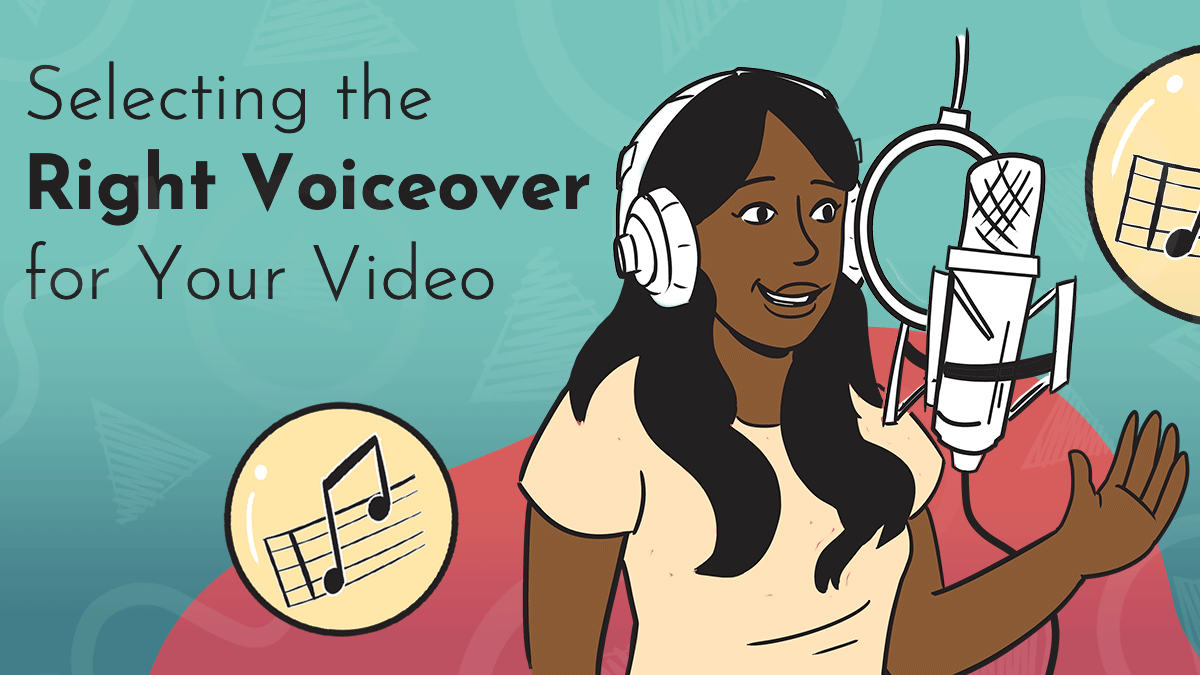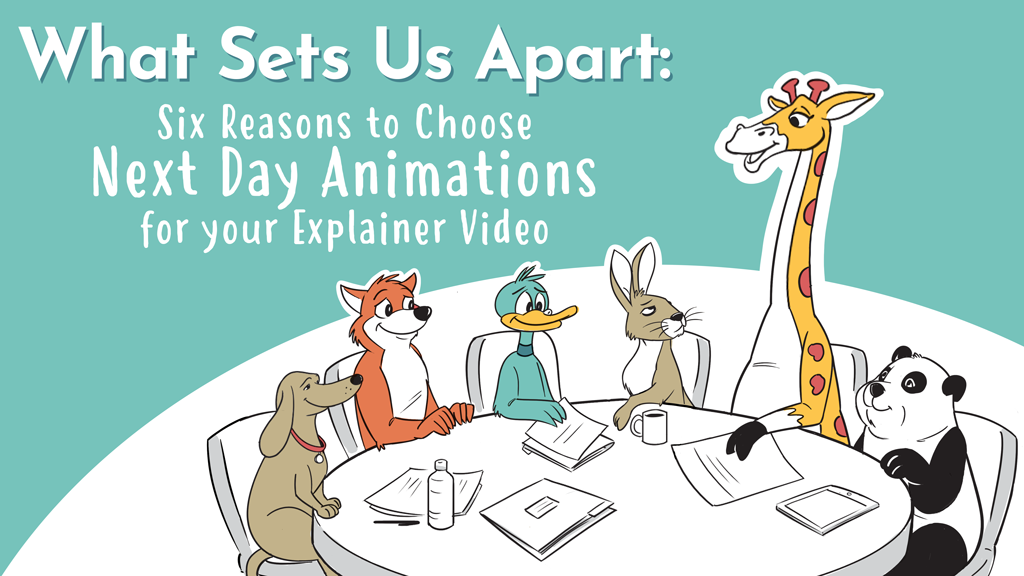
Animation is an amazingly powerful medium for presenting ideas. It’s eye-catching, novel, and truly captivating for audiences.
Many of us fixate first on the visuals in an animated video; the look of what we are watching on screen. But we’re spending time today on the dissection of a much more subtle – yet just as crucial – component of the video.
This positive, welcoming voiceover provides a sense of warmth and ease to audiences considering an overnight stay with IHG Garner Hotels. Click here to see more from their project.
Which one is it? If you said the voice over, you’re right!
Without humans on-screen, the voice over becomes a critical component in a piece of animation’s effectiveness. But when working on your own corporate video, healthcare PSA video, or animated internal memo… how can you be sure you’re using appropriate voice overs for your video’s goal? Moreover, how can you ensure your videos have a signature sound that can support your brand?
The answers to these questions and more lie in our explainer that’s all about voice over for video. Read on to learn more about the often overlooked element of voiceover in video.
Understanding the Role of Voiceover
Voiceovers play a crucial role in bringing animated content to life.
A voice over for videos serves as the narrative backbone, guiding viewers through the story, conveying key messages, and adding emotional depth. Whether it’s an explainer video, animation, marketing video, or educational content, the voiceover helps ensure the information is not only conveyed clearly but also engagingly.
Different Types of Videos that Require Voiceover
Voiceovers are essential across various types of videos, and the voiceover serves a unique purpose in each:
Selecting a Voiceover Artist: Our Process
You may be wondering: at what point does voiceover enter the picture…er…video?
The voiceover artist is ‘a professional actor who uses their voice to create characters, tell stories, communicate vital information, and connect with customers.’
Selecting a voiceover artist is a crucial step in the process – but it can’t happen effectively without a few important prelimary decisions.
Our award-winning process includes our expert catologue access for hundreds of voiceover artists and music. Watch the video or click here to learn more about each step of our process.
At our studio, a project kick-off call with important stakeholders has already taken place by the time voiceover is discussed; it’s not uncommon that we have a full script in hand at this point as well.
Though they take time, planful conversations about goals, audience profiles, and scripting can give you the foundation you need to choose the voiceover artist that will be perfect for your mission. If you have time, we recommend preliminary planning steps such as these before diving into selecting your voiceover artist.
Next, we dive into the most important factors to consider when selecting and directing your voiceover artist – such as tone, audience, and budget.
Factors to Consider When Choosing a Voiceover
Now that you understand the role voiceover plays in grounding an explainer video narrative, let’s dive into the details: when building a plan for your video voiceover, what factors do you consider?
Tone and Style
The tone and style are some of the more tangible characteristics of voiceover. One can become overwhelmed just imagining the breadth of options: from an authoritative voice for a corporate expxplainer video or a friendly, conversational tone for a product animation used for marketing.
Landing intentionally on a tone that aligns with your video’s goals can greatly impact how your message is received. The voice should align with the overall theme and purpose of your content to ensure it resonates with your audience.
In her LinkedIn article on voiceover artists, Arfa Khan lists some specific qualities you might consider, including pitch (vocal range), versatility, rhythm and cadence.
Audience Demographics
Understanding your audience demographics is key to selecting an appropriate voiceover for video.
Consider the age, gender, and cultural background of your target audience. A voice that resonates with your specific audience can make your content more relatable and engaging.
Why? Because when we can see ourselves in narratives, they resonate more deeply.
For instance, a youthful, energetic voice might be perfect for a tech startup video, while a calm, reassuring tone might be better suited for healthcare videos. You might also consider geographic factors when planning your video voiceover, such as reigonal accent, dialect, or even a voiceover in another language!
Budget Constraints
We know well that budget is always a critical factor in decision making for video production.
When considering your target audience, don’t overlook opportunities to increase engagement with translations and subtitles. Read more about our studio’s accessability packages.
While high-profile voiceover artists can add significant value to your project, they can also be quite expensive. It’s important to find a balance between quality and cost.
If you aren’t partnering with a full-service studio like ours where voiceover is included, you have responsibility over the added cost of voiceover in your production. Do your research on the different studios offering voiceover talent, or seek out individual artists looking for opportunities, until you find an artist that meets your needs and budget.
Brand Consistency
Consistency is key to maintaining a strong brand identity, and the voiceover is no exception.
The voiceover should match your brand’s personality and values. Whether your brand is known for being fun and quirky or serious and reliable, the voiceover should reflect this. Consistent use of the same or similar voiceovers across multiple videos can help build a recognizable and trustworthy brand image (we’ve seen this prove particularly impactful in internal communication explainer videos, such as videos for HR & training.)
Project Timeline
As with any aspect of the production process, your project timeline will influence decision making around voice-over for video and animation.
Having all the time in the world gives you opportunities to hunt for the perfect fit. Some professionals may have longer lead times due to their busy schedules, and a more forgiving timeline gives you the flexibility required to partner with certain artists.
If you’re running low on time, consider working with a full-service animation studio – like us – to contract out the time consuming decision making. If your project has a tight deadline, we connect you with voiceover artists who can deliver high-quality work quickly. Additionally, we factor in a clear schedule and allow ample time for revisions, to ensure that the final voiceover (and overall product!) meets your expectations.
Using Voiceover for Different Types of Videos
In this section, we’ll explore how voiceover for video and animation can be effectively used in different contexts, including internal communications, marketing campaigns, and educational content.
By understanding the unique requirements of each type of video, you can select a voiceover that not only complements the visuals but also amplifies your message.
A Note on AI Voiceover Technology
AI voiceover technology has made significant strides in recent years. Let’s talk about it.
Artificial intelligence offers a range of capabilities that can be particularly useful in specific scenarios, including video production. These tools can generate voiceovers quickly and cost-effectively, making them an attractive option for projects with tight budgets and deadlines.
However, while AI voice over for videos can mimic human speech patterns and tones, it often falls short in capturing the nuanced emotions and inflections that a human voice artist brings to the table.
Understanding the Capabilities of AI Voiceover Tools
AI voiceover tools are designed to generate speech from text with impressive accuracy.
For example, they can be used effectively for basic narration or straightforward instructional videos, providing options to deliver lines in a handful of various styles and tones.
However, these tools are limited in their ability to adapt to the subtleties of complex scripts that require a deep understanding of context and emotion. This article from ‘Tone of Choice’ discusses how the fine intricacies of tone, pace and inflection play a role in producing the very specific, personal connections your video is likely aiming for. Manipulating these factors may prove too fine-detail for technology rooted in artificial intelligence – at least, for now.
Integrating AI Voiceovers into Your Production Process
Integrating AI voiceovers into your production process can be an alternative way to capitalize on the capabilities of AI voiceover tools. Consider using AI to streamline workflows, especially for repetitive or less emotionally-driven content.
They can serve as a quick solution for drafts or preliminary versions of videos. AI voiceover tools can also provide great ‘sounding boards’ for scriptwriting. Because the written word carries weight differently than the spoken word, it is crucial to listen to your script drafts read aloud – and AI can help with th is.
Despite these benefits, it’s important to remember that AI voiceovers in the final video often lack the depth and authenticity that human voice actors provide. This can be a significant drawback for content that relies heavily on emotional connection, such as marketing videos, educational content, and personalized communication.
Check out this article from Miguel Sydney for another take on video voiceover using AI technology.
Strong Voiceover = Strong Video
Crafting the perfect video goes beyond just stunning visuals and captivating animations; it requires a thoughtfully chosen voiceover that resonates with your audience and enhances your message.
By following the suggestions we’ve laid out – or cutting out the middle man and partnering with a top-notch studio like ours – you can ensure that the impact of your message is enhanced by your video voiceover.



